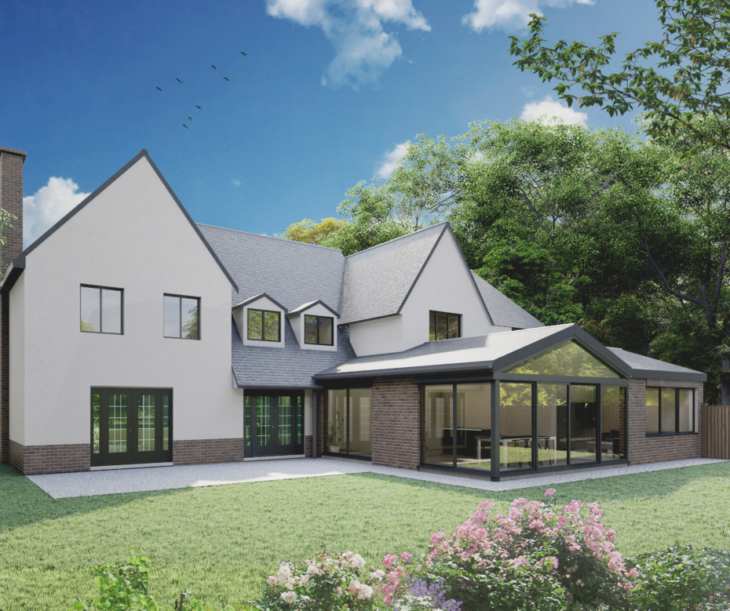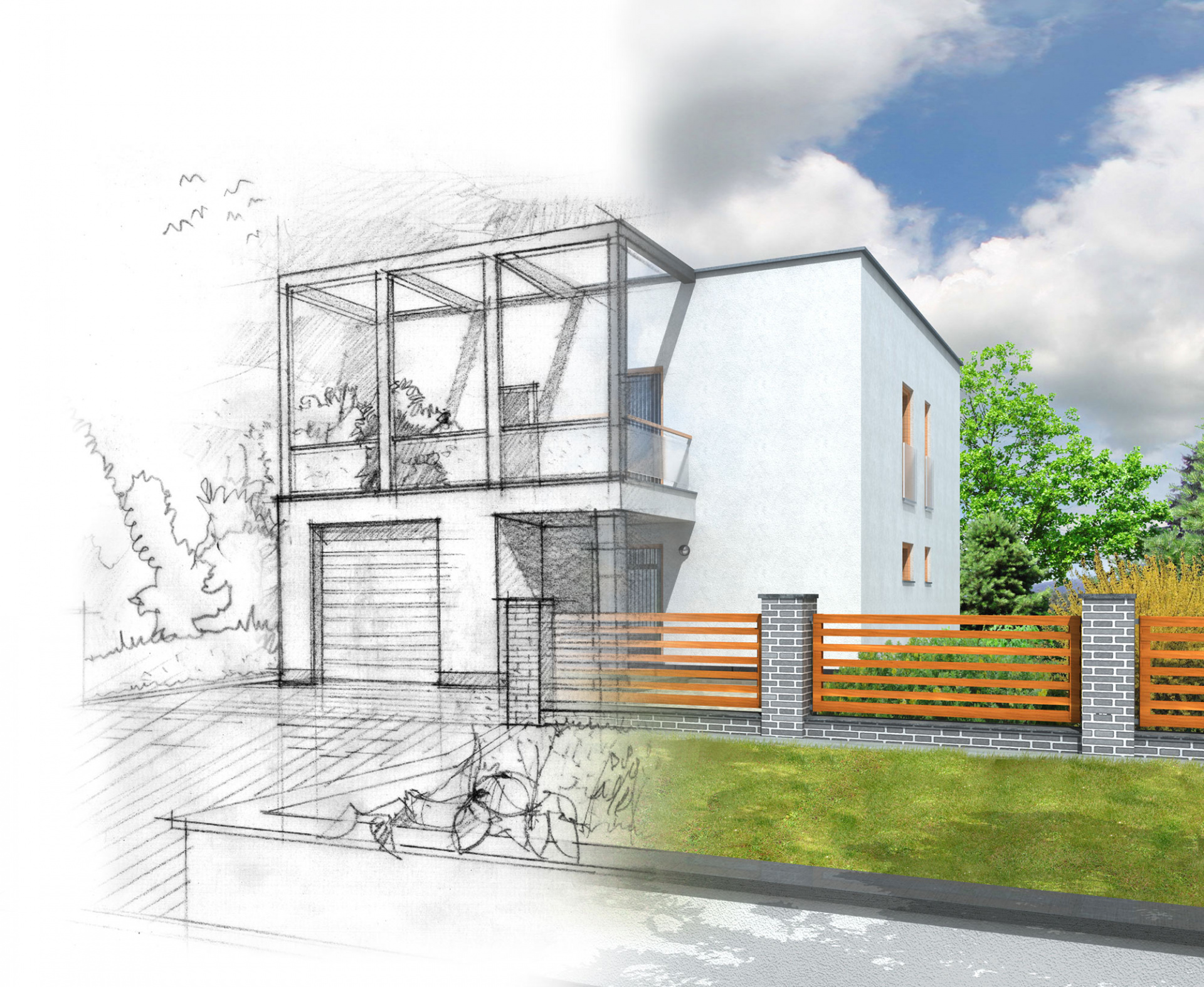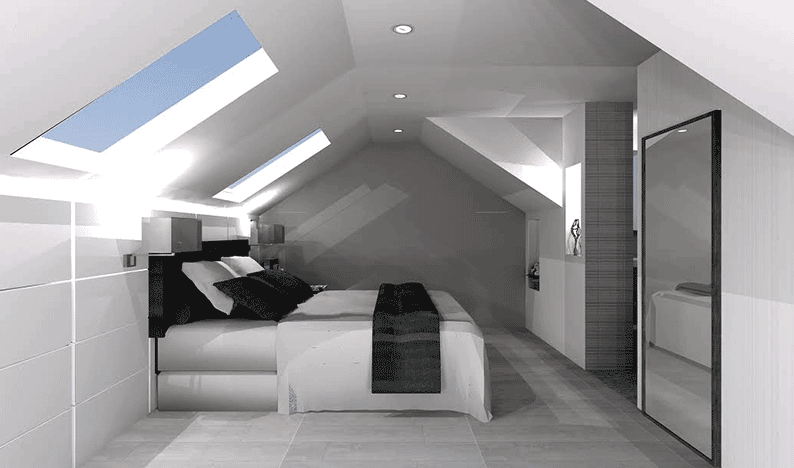The Ultimate Guide to Pitched Roof Extensions UK
The residential city space of London and its neighbourhoods are characterised by pitched roofs, contributing to the vernacular of the city and implants an identity to the boroughs. If you are someone who is thinking of a home extension, and is overwhelmed with a lot of decisions, this might be just the article for you! Before you delve into the nitty-gritty of Whether your roof is flat or pitched, your choice is pivotal. In this guide, we unravel the allure of pitched roofs, exploring benefits, creative possibilities, and budget considerations for a seamless extension experience. Ready to elevate your space? Let's dive into the ultimate guide to pitched roof extensions in the UK.

Extending your home is an exciting project, and it can become easy to get wrapped up in details like decor and the finer points of choosing your exact specification. But before you get into the fine-tuning, you have to consider the bones of your project – its structure.
Essentially, there are two options for your roof – a flat roof or a pitched one. Here, we are looking at the important aspects of pitched roof extensions, and why or how you might go about choosing one.
Extension Architecture’ Expertise: With over 16 years of experience, Extension Architecture has dealt with a lot of single-storey and double-storey extensions as well as new-built projects featuring both pitched roofs and flat roofs. This gives us an edge to know the advantages and disadvantages of both and suggesting which shall be the best one for you according to your needs and personality!
The benefits of a pitched roof for your extension
In countries that receive a lot of rain, especially England, pitched roofs are a typical choice to ensure water run-off is efficient and diverts the water back to the ground quickly. Flat roofs are a popular choice too for house extensions, however, careful attention is needed when considering how water should be expelled from the roof. In most cases, a pitched roof is preferable, here’s why:
1: Durable Towards the Elements
A pitched roof is designed to deal with the elements of nature particularly in rainy areas . It resembles a mountain – thus making it strong enough to tolerate harsh live loads like wind and snow. Pitched roofs are constructed with durable materials such as steel, brick, timber and roof tiles which last longer than some flat roofs without the need for extensive maintenance.
2: Efficient water drainage
The sloping design of a pitched roof directs water and snow away from the roof’s surface, making water drainage much more effective. This helps in reducing scenarios of leakage and hence, protects the structure from deteriorating.3: Improved Ventilation and Insulation
In the case of pitched roofs, there is valuable extra space, usually referred to as an attic, that promotes natural ventilation allowing air to circulate easily. It also serves as space for adding extra insulation for thermal control and comfort.
4: Blending into London Character
Pitched roofs either hipped or gabled, are a typical feature when looking at typologies of residential houses in and around London. Especially Victorian terraces or semi-detached properties of the Arts & Crafts movement, pitched roofs tend to be a favorable choice when proposing extensions or new build homes.

* Part Single, Part Double Rear Extension in Purley by Extension Architecture (Design by Stephanie Fanizza & Zak Gilby)
5: Increased Design Creativity
Pitched roof extensions mean you can create a better sense of space and light with higher ceilings, vaulted ceilings, or sloping ceilings. While flat roofs look sleek and beautiful, pitched roofs give additional design creativity. You can also make use of interesting architectural features such as beams, or install skylights to create a truly bright space with the help of architects in London.

* Single Storey Rear Extension in Surrey by Extension Architecure (Design by Eugene Kim)
Extension Architecture’s expertise: Our in-house project managers, planners and interior designers can unlock the full potential of your property and will propose the best design options from the beginning of the project until its completion, making sure all work is carried out in the most efficient, hassle free manner. Take a look at our notable extension and new build projects in Epsom, Croydon, Surrey, and Sutton.
Problems associated with choosing a pitched roof extension
1: Cost:
Put simply, a pitched roof extension will cost you more to build than an equivalent one with a flat roof. This is because the materials are more expensive and there is more structural engineering involved, so you can expect to pay approximately 15% on top of your standard flat roof costs. Having said that, it is also important to note that it requires comparatively less maintenance and has a longer payback period in comparison to a flat roof.2: It takes a little longer:
Pitched roofs take slightly longer to construct in comparison to flat roofs. This is because there are more materials and labour involved. You may need to cope with the disruption a little longer caused by the building works, however, we promise it will be well worth the wait.

Steph Fanizza, Architectural Design & Team Manager
Tell us about your plan and we'll send you a free quote! It takes less than 60 seconds!
The costs of your pitched roof extension
To a certain extent, how much your pitched roof extension will cost depends on your budget and the type and size of extension that you’re planning to build.
The smallest, simplest builds could cost around the £40,000 mark, but larger or more highly specified projects could go to £80,000 or even more.
The main factor in cost is size, but the complexity of a job will increase your costs too: can you do it under permitted development rules or do you need full planning permission? How easy is access to the site? These are the sorts of issues that will push your costs up.
Another important factor to consider is the need to budget for unknown contingencies – so make sure you have around 10-15 per cent of your overall budget set aside for unexpected extras.
To Summarise
Recognizing that this architectural element transcends mere functionality, we’ve explored its impact on aesthetics and functionality. Armed with this knowledge, you’re better positioned to make informed decisions tailored to your design preferences and structural requirements. While flat roofs certainly have their perks such as being budget friendly, design worthy and better for smaller extensions – pitched roofs serve as a functional and practical addition. It’s not always possible to have a pitched roof, and it truly depends on your design, however, they have proved to be much more energy efficient and suited to rainy climates such as London. A pitch roof serves as a practical shelter and a defining feature, adding a touch of sophistication to your architectural vision. For further guidance or consultation, our team remains at your disposal.














